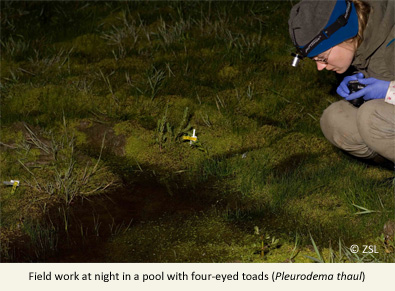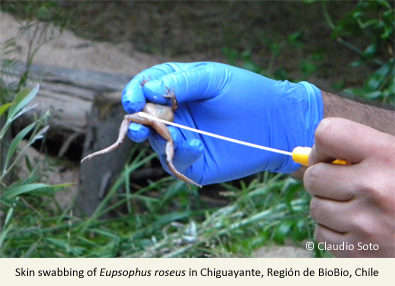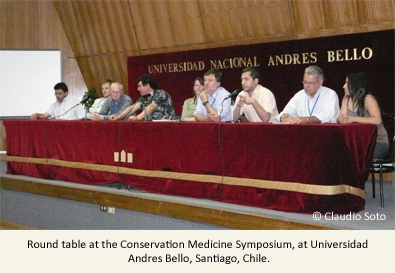In the last year, EDGE Fellow for the conservation of Darwin’s frogs, wildlife veterinarian, Claudio Soto, has undertaken several activities in order to know current conservation status of both species, the Northern Darwin’s frog (Rhinoderma rufum) and the Southern Darwin’s frog (R. darwinii), as well as, assessing the presence and impacts of amphibian chytridiomicosis, and impacts on native amphibians of Chile, including Rhinoderma spp.
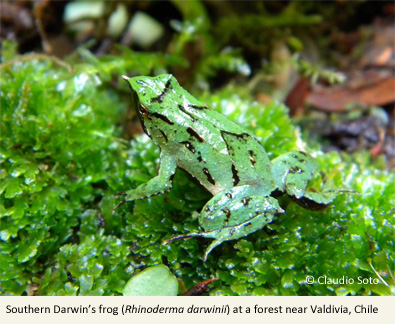
Southern Darwin’s frog is currently considered as Vulnerable by the IUCN, however this classification have been done without much information. This species was first described by Charles Darwin in 1835, in the forests near the city of Valdivia, where he described the species as excessively abundant. Currently, its populations have gone under a rapid decline, and its distribution decreases at an alarming rate. On the other hand, Northern Darwin’s frog (R. rufum), was first described in 1902, and apparently was locally abundant prior 1970’s. To date none individual of the species have been recorded in the last 30 years.
Both species have a unique reproduction strategy among all amphibians, where males are capable if ingesting fertilised eggs, which go through incubation, hatching and metamorphosis in the male’s specialised vocal sac, a process which take around 6 weeks.
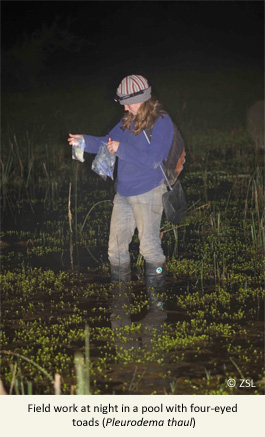
Through field work, non-invasive skin swabs have been collected for disease testing throughout the whole historic distribution range of both species of Darwin’s frogs, covering an extensive study range larger than 1,000 km. More than 800 samples have been obtained from 17 species of native amphibians and also from the invasive African clawed frog (X. laevis).
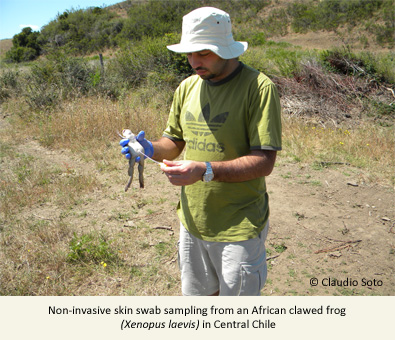
Also, a laboratory for the detection of Batrachochytrium dendrobatidis (Bd) through molecular techniques, has been set up in the Universidad Andres Bello. Our preliminary results, allow us to record the first cases of chytrid infection in native frogs of Chile.
Finally, meetings with the Director of the Department of Protection of Natural Resources, Agricultural and Livestock Service, Ministry of Agriculture; as well as, the organization of the successful First National Symposium on Conservation Medicine: ‘since 200 years of Darwin‘, held at the Universidad Andres Bello, have served as good platforms to introduced the threat of amphibian chytridiomycosis to native amphibians, and present our research and the importance to study and conserve Darwin’s frogs.
To support EDGE Fellows, like Claudio, who are researching and conserving one-of-a kind EDGE species, please donate here or become an EDGE Champion.
